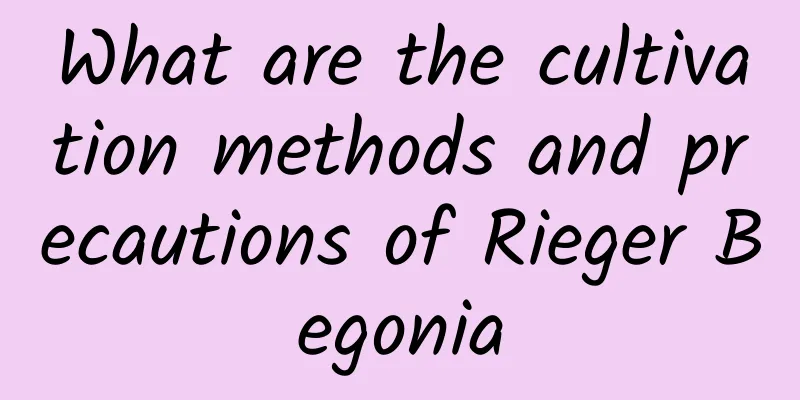What are the cultivation methods and precautions of Rieger Begonia

Introduction of Rieger BegoniaRieger Begonia is a plant of the Cucurbitales, Begonia genus, Begoniaceae family. It is a plant with fibrous roots, a plump shape, and single leaves arranged alternately. The color of Regent Begonia is generally emerald green, and very rarely reddish brown. The flowers are rich in colors, including red, orange, yellow, white, etc. The flowering period is long, lasting from December to April of the following year. How to grow Rieger BegoniaBegonia prefers warm, humid, semi-shaded environment. The suitable growth temperature is between 18-22 degrees. The wintering temperature should not be lower than 15 degrees Celsius. It is suitable for planting in loose, fertile, well-drained substrates, such as coconut coir, peat soil, vermiculite, perlite, carbonized bark, etc. Water the Begonia frequently during the growing season. Increase the amount of watering appropriately in the summer. You can water it in the morning and evening. In the winter, water it at noon when the temperature is slightly higher. It needs to be given sufficient sunlight, and proper shade should be provided in the early growth stage. Pay attention to applying fertilizer thinly and frequently, and apply nitrogen fertilizer when it is a seedling. Watering methodWatering of Begonia should be carried out according to the season. In summer, water evaporates rapidly, so more watering is needed. Watering can be done in the morning and evening. In winter, watering is needed at noon. The water temperature should not be too low to avoid frostbite of the plant. If the air is dry, spray water appropriately. Be careful to spray the water on the leaves, not on the flowers. Fertilization methodYoung Regis Begonia seedlings need some nitrogen fertilizer. When they grow up, the application of nitrogen fertilizer should be controlled, and phosphorus and potassium fertilizers should be increased. The concentration of fertilizers should not be too high, and thin fertilizers should be applied frequently. Before flowering, more fertilizers need to be applied to effectively extend the flowering period. You can also spray some not-too-concentrated foliar fertilizers. Pruning methodsWhen the Begonia grows to a certain height, it needs to be pinched, and the excess flower buds should be removed in time to avoid a large consumption of nutrients and affect the growth and development of the flowers. Things to note when growing Rieger BegoniaBecause Begonia is afraid of waterlogging, watering should be moderate, no water accumulation should occur, and heavy rain should be avoided. In addition, when watering, do not get too much water on the leaves. |
<<: What are the cultivation methods and precautions for soil cultured hyacinths?
>>: What are the cultivation methods and precautions for Hawaiian bamboo?
Recommend
Does kiwi fruit prefer shade or sun?
Does kiwi fruit prefer shade or sun? Kiwi fruit i...
Cultivation methods and precautions of Japanese begonia
1. Breeding methods (1) Soil: Acidic or neutral s...
What are the cultivation methods and precautions of pistachios?
Pistachio cultivation method Pistachio is a tropi...
When does Milan flower bloom?
1. Flowering time Milan is a plant with a relativ...
How to fertilize spoon lip orchid
1. Fertilizer selection When fertilizing the spoo...
How to grow blue star flowers
1. Breeding environment 1. Watering: The soil sho...
Can dragon bones be grafted onto Christmas cactus?
1. Can it be grafted? Dragon bone is a succulent ...
Can reeds be planted in the yard?
Can I grow reeds in my yard? Reeds can be placed ...
How often should I water the blue snowflakes?
1. Watering frequency during flowering period Blu...
When to transplant osmanthus trees
Transplanting osmanthus trees cannot be done at a...
If you do this when the spring taro leaves turn yellow, they will turn green in minutes!
There are many reasons why the leaves of taro tur...
What fertilizer to use for Jabuticaba
If you want the jaboticaba to grow better, you mu...
How often should Podocarpus be fertilized and what is the time and method of fertilization?
How often should Podocarpus be fertilized? 1. Dur...
How to care for Dutch chrysanthemum after the flowering period
Pruning after blooming After all the flowers have...
Can I grow plum blossoms at home?
Can I grow plum blossoms at home? You can plant p...









